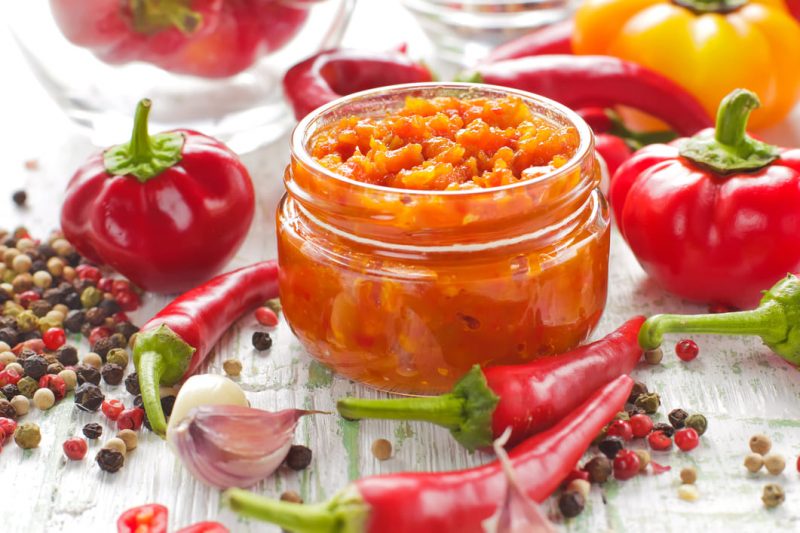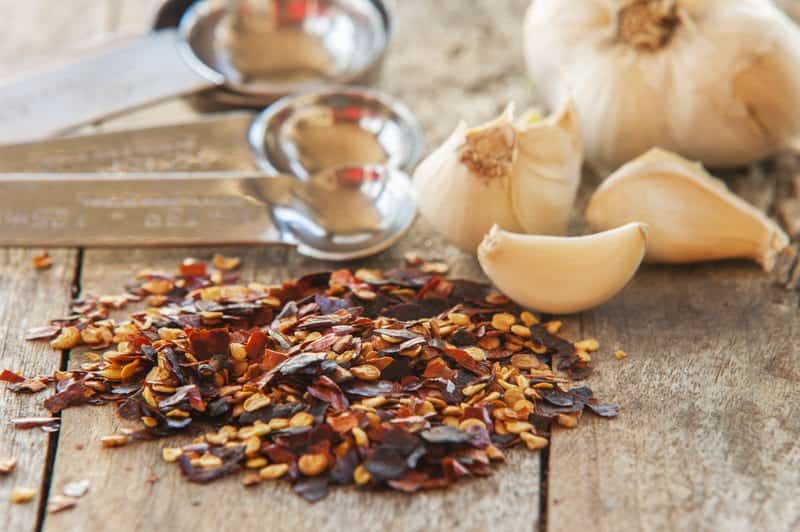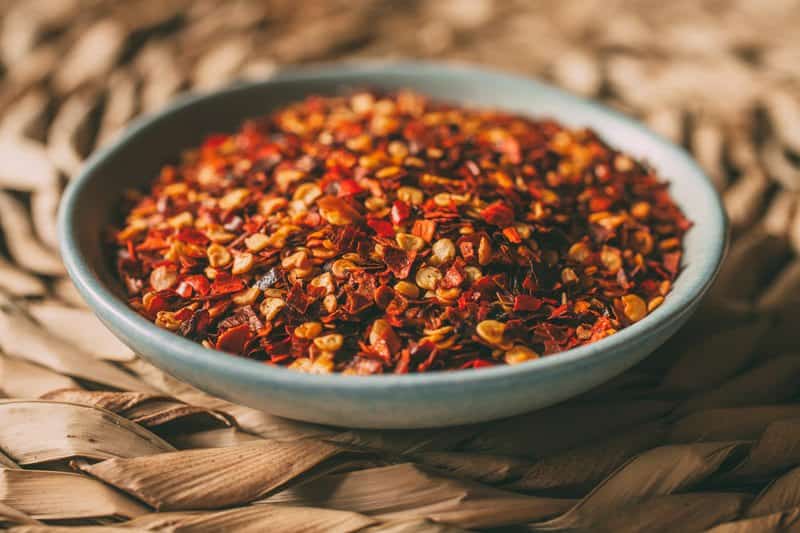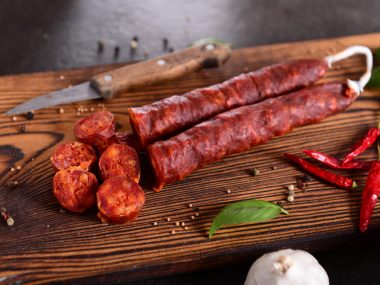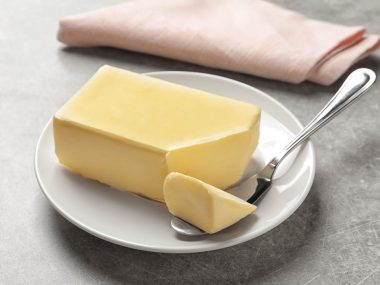For the spicy food fanatics, it’s true how the number one condiment on every mealtime is no less than chili sauce. It’s a perfect partner for adding some kick to every dish whether it’s meat or vegetables. It can also be added while cooking so the food is already spicy hot.
That’s why it’s frustrating when you happen to run out some. Good thing, you can substitute chili sauce with sriracha sauce.
Chili Sauce Substitutes
Let’s learn more about these substitutes and how it’s effective to substitute chili sauce.
1. Sriracha Sauce
A bit of history, sriracha sauce originated in Thailand from the 1930s by Thanom Chakkapak. Ever since the boom of Thai food worldwide, the well-known sauce also got the nods of the international culinary scene.
The sauce is made out of red jalapeño chili peppers, vinegar, garlic, and sugar. You can actually try making this at home and use your very own homemade sriracha sauce.
For first-timers, you might want to try a small amount first and work your way on how you feel about its level of spiciness. It’s relatively spicy compared to other spicy condiments so handle with caution.
2. Chili-garlic Paste
This one is a very easy substitution with garlic sauce. If you have some spare red chilis and garlic in the fridge, then perfect! It’s also nice if you have a chili plant outside that you can harvest for a fresher taste. This paste is very easy to make at home by just using a mortar and pestle.
I recommend roasting or drying the chilis first and then just roughly chop it or leave it as it is. Add a generous amount of chili and garlic cloves in the mortar and start pounding. Pound until a paste-like texture starts forming. If a mortar and pestle is unavailable, you can also use a blender or food processor.
Store it in a clean jar for a week of usage. You may also add olive oil, salt, and pepper to add some taste to it. But I prefer it just like that to highlight its spicy garlic taste. Perfect for rice bowl toppings and hot chicken wing glaze.
3. Regular Hot Sauce
The easiest choice from this list is of course store-bought hot sauce. But, do not underestimate because there’s a lot of good choices to choose from when it comes to picking a good hot sauce. The market offers a variety of heat levels depending on your preference.
There are hot sauces that are milder in heat and there are ones that are extremely spicy, feel free to choose your weapon. First, it’s important to check the label for the ingredients and the spicy levels before buying. This will help guide you on which ones to pick.
4. Chili Powder or Flakes
Chili powder or chili flakes are also easy to find in the market. They have it packed as a seasoning in a bag or in a jar form. It doesn’t matter if you pick the powdered or flaked ones. It all boils down to the type of chili being used in the packet.
Check the label and assess if you like its spicy level. Banana peppers, poblano, and anaheim peppers are one of the variants that you should prefer if you like a milder kick of spice. For a really spicy kick, pick the ones that are made from jalapeño peppers, Carolina reaper, ghost pepper, and Korean chili peppers.
You can also make your own homemade chili flakes by drying or roasting your choice of chili peppers. Just grind it with the use of a food processor and store in an airtight jar or ziplock bag. This recipe is great to follow because it can last you for a year of usage which makes it practical and time-saving.
5. Spicy Ketchup
If you really prefer a paste-like spicy condiment instead of having it in powder form, then consider the regular ketchup. Yes, ketchup can be your chili sauce substitute. If you only have regular ketchup at home, you may simply add some chopped fresh chilis in and mix. This will surely level up the regular taste of the ketchup.
If you have chili flakes or powder, use this instead and mix a tablespoon for 1 cup of ketchup. Adjust the amount of chili flakes if you like it spicier or milder. Some actually would heat up the ketchup and mix the chilis in to make it spicier.
But to save time, there are readily available spicy ketchup that you can purchase at the store. This is preferable to use because of its longer shelf life and easy use bottle that can be easily poured on hotdog buns, meats, and other dishes.
6. Spicy Tomato Sauce
And last but not least is substituting chili sauce with tomato sauce. You can apply the same concept as ketchup. Open a spare can of tomato sauce, doesn’t matter which brand. Then pick whether you like to add fresh chili or chili powder instead. Then just mix or heat it so the sauce can absorb the heat better.
Some chefs use this technique for making pasta sauces more spicy and unique. Also, it gives you the freedom to adjust the level of spiciness of the sauce instead of buying ready-made chili sauces.
We hope that the list above brought additional insight on what to substitute the next time you run out of chili sauce. But if you personally prefer the real thing, that’s perfectly fine, too! Might as well follow this easy recipe below and make your own homemade chili sauce.
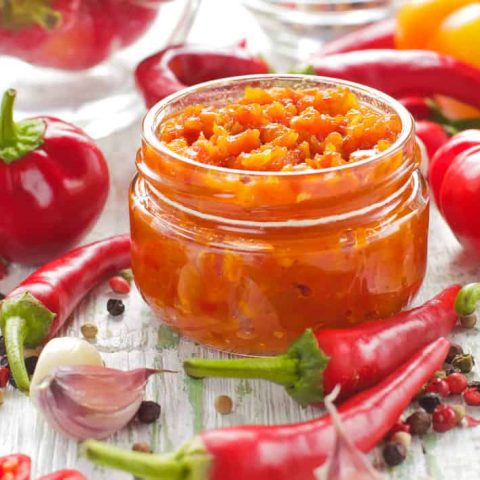
Homemade Chili Sauce
Ingredients
- 1 cup of jalapeño peppers
- 1 cup of red chili peppers
- 3 garlic cloves
- 1 large tomato
- ¼ cup vinegar
- 1 tsp pepper
- 1 tsp salt
- 1 tsp ground oregano
- 1 tbsp brown sugar
Instructions
- Dry or roast the chilis in the oven. Make sure to wash the chilis first and remove the stems. If you like it milder, remove the seeds. For a spicier variant, keep the seeds.
- Heat up the pan and start sauteing the garlic and roasted chilis.
- Then add the chopped tomatoes, ground oregano, sugar, vinegar, salt, and pepper.
- Mix and cover for 15 minutes. (Caution: depending on the chilis you used, you can use a protective eyeglass if it gets too spicy up close)
- Take out the chili sauce mixture from the heat and let it cool down for at least 20 minutes.
- After cooling down, prepare the chili sauce and puree in the blender or food processor. Continue mixing until you achieve the consistency that you desired.
- Store in a clean air-tight jar or Tupperware. You can store the chili sauce for 3 months. Just make sure to refrigerate to avoid contaminants from spoiling the sauce.
